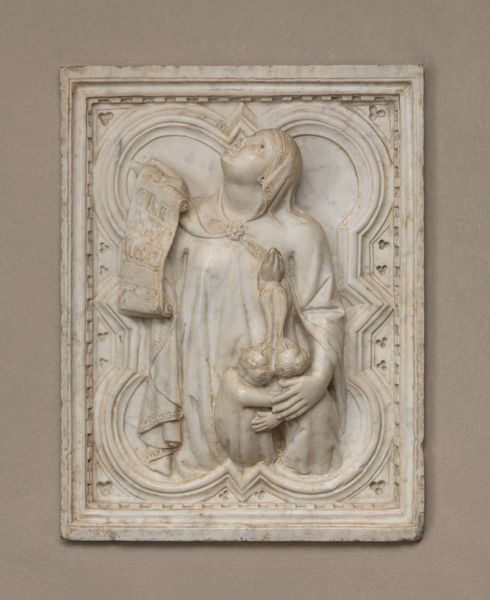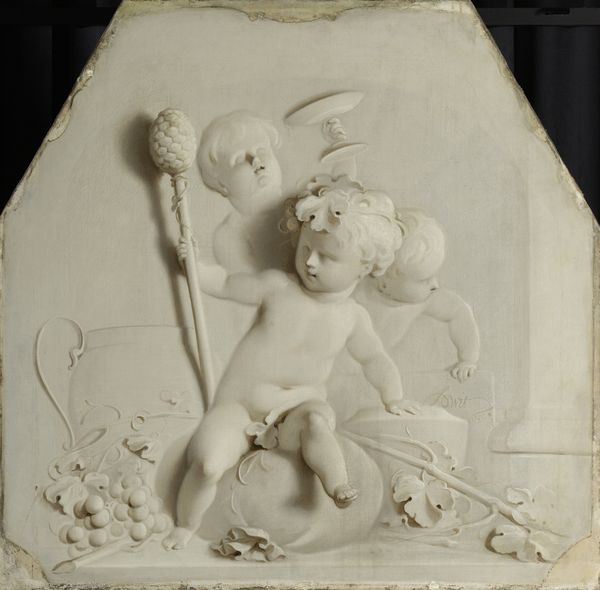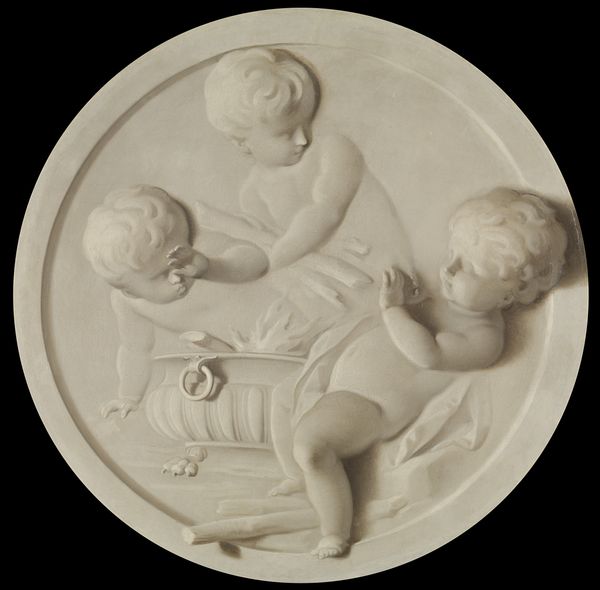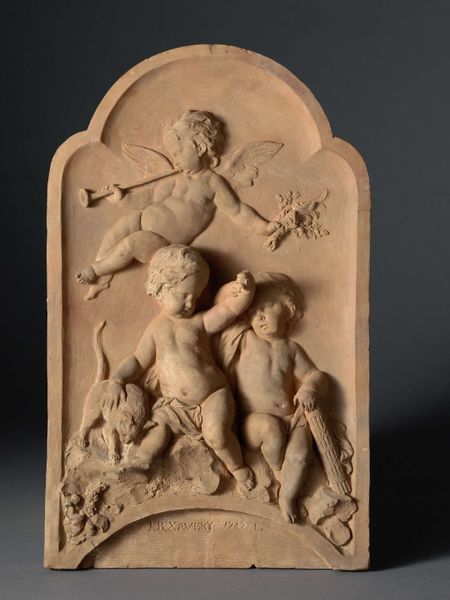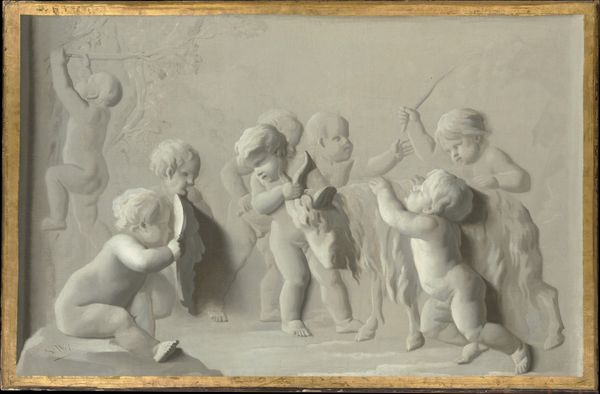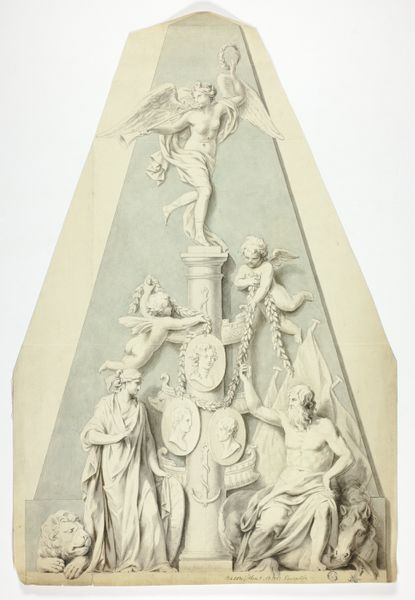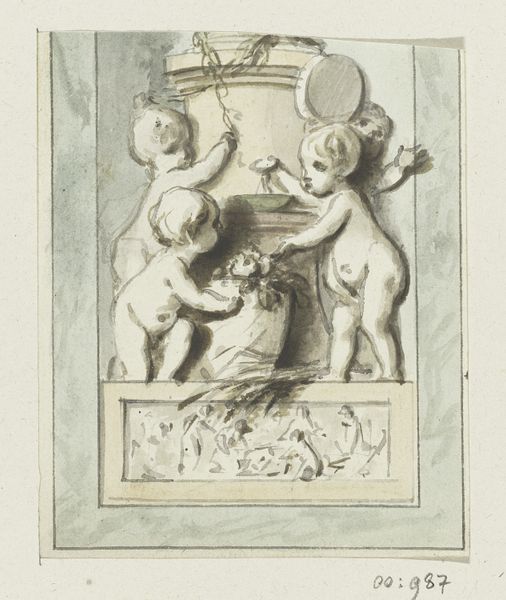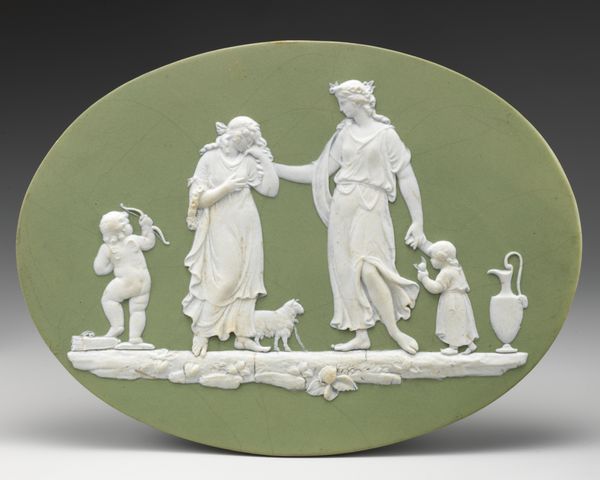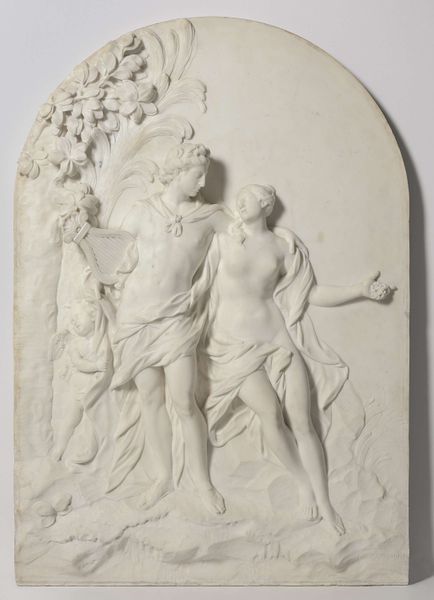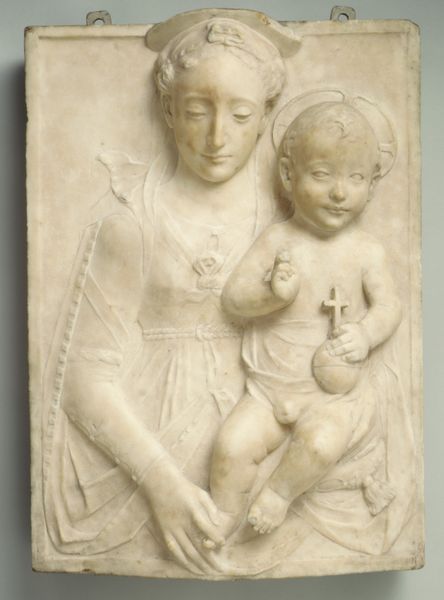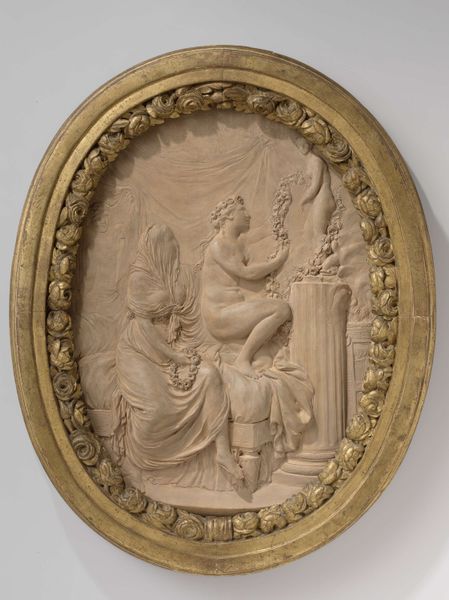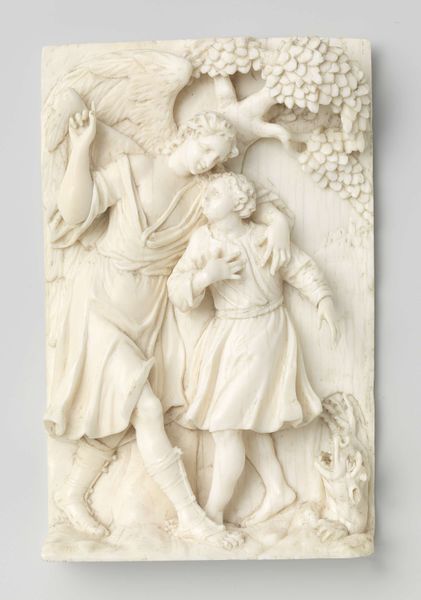
Dimensions: support height 120 cm, support width 85 cm, support depth 3 cm
Copyright: Rijks Museum: Open Domain
Jacob de Wit’s ‘Herfst’ panel, from the 1700s, is made with a trompe l'oeil technique, creating the illusion of three-dimensional sculpture on a flat surface. Executed in shades of white and gray, the artwork mimics the look of plaster or stucco relief, a popular form of decoration during the Baroque period. De Wit's mastery lies in his ability to simulate the texture and depth of real sculpture through paint. The fluid brushwork captures the soft contours of the cherubic figures, the folds of drapery, and the abundance of grapes, all contributing to the deception. The technique of trompe l'oeil, while visually stunning, also speaks to broader issues of class and consumption. It allowed patrons to enjoy the aesthetic appeal of expensive sculptural ornamentation at a fraction of the cost. De Wit was celebrated for such skill, demonstrating that artistic ingenuity could democratize access to luxury. His skilled imitation challenges the traditional hierarchy between painting and sculpture, raising questions about authenticity and value in art.
Comments
No comments
Be the first to comment and join the conversation on the ultimate creative platform.
